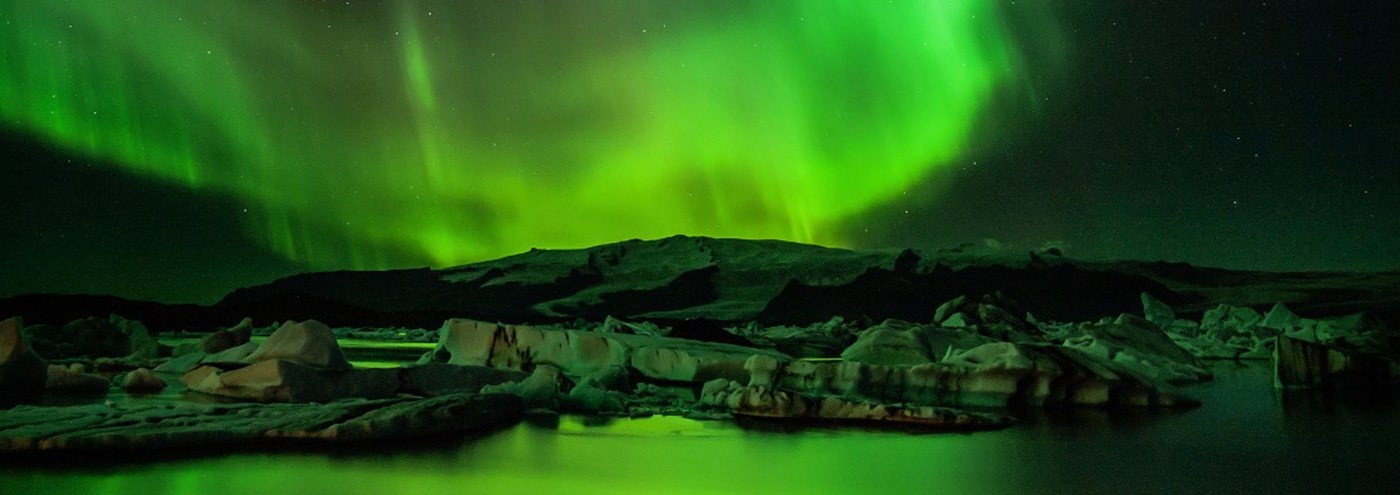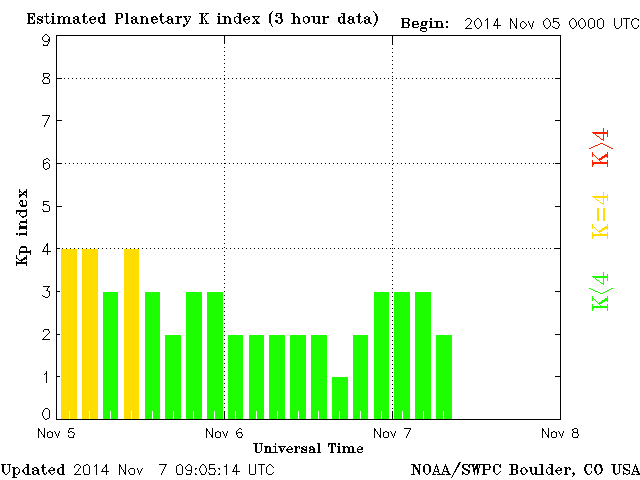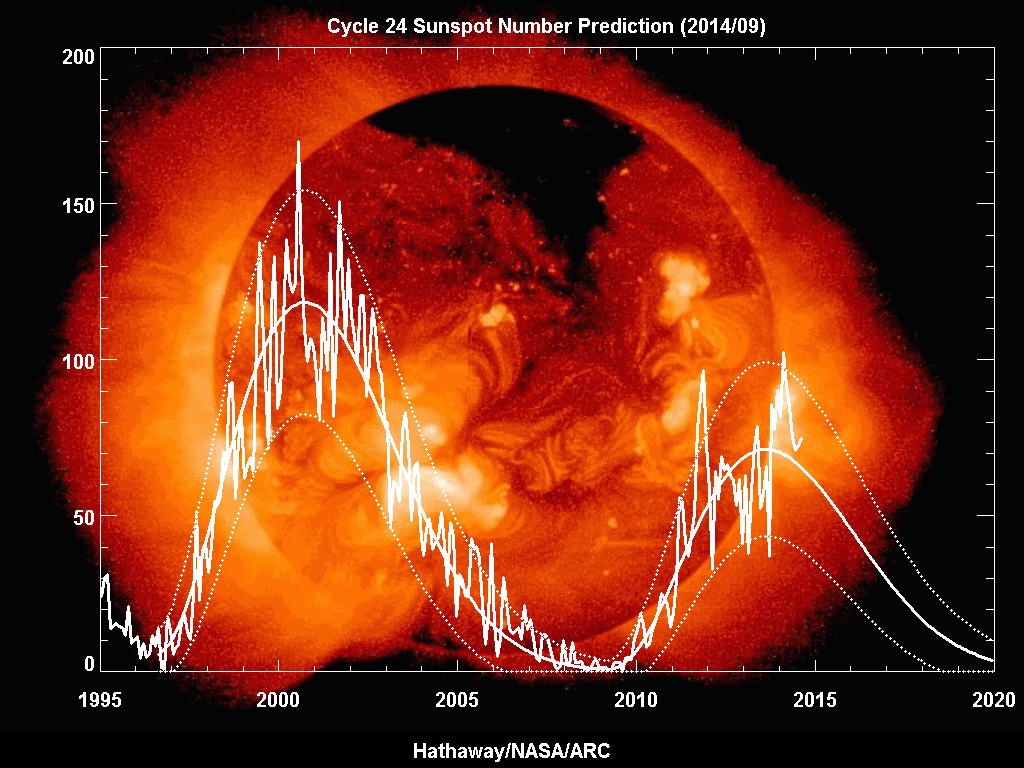
When Can one see Northern Lights
In this section you can find information on:
The best time of the year to see Northern Lights
How often is there a display?
The predictability of Northern Lights
The Solar Cycle
The Best Time of the Year and Day to see Northern Lights
The winter months as well as the late fall and early spring months are the main season to see Northern Lights. In Iceland the sky is relatively dark during the night from late August to early April and therefore there are higher chances to see the lights during these months.
In general the lights are often present although you cannot see them with your own eyes, due to the fact that the daylight is too bright. Therefore, the best time to see the lights is sometime during the dark season. According to the Earth’s Physics Department of St. Petersburg University the best months are September/October and March/April. Nevertheless, Northern Lights can also frequently and intense be seen during the other months of the dark season. According to the Geophysical Institute of Alaska the best time of the day to see northern lights is between 10pm and 2 am local time. The Mc Graw-Hill Encyclopedia of Science and Technology is even more precise and says that the optimal time of the day is during the so called magnetic midnight. Magnetic midnight is occurring in the moment when the North Pole is in a precise line in-between the location in question and the sun.
Some people are worried that a full moon would lower their chances to see Northern Lights. However, the light caused by a full moon only affects Northern Lights visibility if the lights are not very strong.
How often is there a Display?
Since the Northern Lights are a phenomenon created by nature, there is no such thing as a golden rule for how often they are visible. Among other things the visibility depends on how cloudy the sky is. In periods of high solar activity it can be the case that the Northern Lights can be seen several nights in a row, while during other periods they are not visible for many days. However, it is definitely worth to give it a try. As a role of thumb one could say that a there is a quite good chance for a display during a period of around 5 days. As described in the next section on the predictability of Northern Lights it is not possible to give you an accurate forecast on the aurora activity prior to your arrival.
The Predictability of Northern Lights
(Source: Space Weather Prediction Center)
Precise forecasts for Northern Lights are not possible. Especially in the long run there is no method to forecast activity with certainty. Since the time period it takes the sun particles that are causing the Northern Lights to travel to the earth is approximately around 2 days, the most accurate aurora forecasts can be made for this time frame. The index that is most often used for these forecasts is the Kp-index that can be found in the image above. It is a measure of disturbances to the magnetic shield of our planet caused by solar activity. As stated by the Sodankyla Geophysical Observatory in Finland the fact that the sun rotates around its own axis within a period of 27 days and since sunspots can stay for many months it might be helpful to investigate the aurora activity that occurred 27 days before. However, as said before there are many other factors involved that influence the visibility of Northern Lights. Therefore, forecasts based on these methods are not fully reliable.
Various institutions publish short run (up to a couple of days) aurora forecasts. A selection of these forecasts can be found on the following webpages:
Icelandic Metrological Institution
Geophysical Institution University of Alaska
Spaceweather.com
Space Weather Prediction Center
A guide on how to interpret aurora forecasts can be found here (ADD link)
The Solar Cycle
The sun has seasons just as the earth has as well and these seasons have effects on the Northern Lights activity. The length of such a cycle of solar seasons can be approximated to 11 years. During the different seasons of the sun, there are different amounts of so-called sunspots. Sunspots are areas that have a darker color compared to the otherwise bright colored outer layer of the sun. This difference in color is caused by a difference in the temperatures of the sunspots compared to its surrounding. Sunspots cause rather low effects on the degree of solar emissions. However, the simultaneously occurring variations in magnetic activity, which is caused by the fact that the sunspots have their own magnetic field, lead to tremendous effects on solar storms both with respect to their occurrence and intensity. Therefore, they have effects on the occurrence and intensity of Northern Lights. The peak of the number of sunspots during one cycle is referred to as the Solar Maximum. During this Solar Maximum the amount and intensity of Northern Lights is higher than during other periods. However, this does not mean that during other periods Northern Lights to not occur frequently and intense.
Scientist were able to keep track of these cycles during the last 300 years and are therefore also able to predict the solar cycle in the future. The cycle that is happening now (year 2014) is cycle 24 and we are over 6 years into the cycle. The image below shows the predicted solar cycle during the next years.
(source: http://solarscience.msfc.nasa.gov/images/ssn_predict_l.gif )



